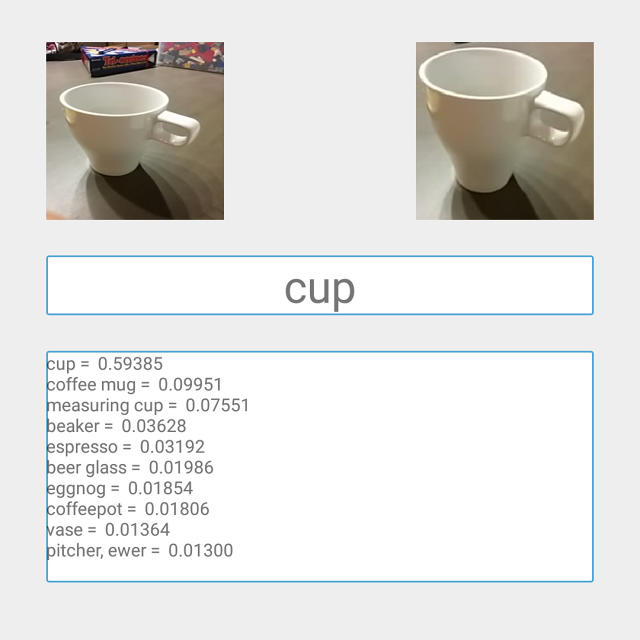This amazing App Sees Objects For Blind people
It’s nowhere near good, but this free Android app is a should-are trying for everyone, blind or sighted.
January 5, 2016
Standing with my eyes closed within the bathroom, I purpose my telephone within the air. It vibrates, more and more, except it’s buzzing with excitement. “toilet,” it proclaims in a female robotic voice. “shower,” it adds a number of moments later. My telephone is seeing for me, and it’s scary-remarkable. Like the primary time Dragon Dictate understood my speech, or facebook picked my head out of a crowd.
I’m the use of a free Android app known as BlindTool. by using Joseph Paul Cohen, a Ph.D Candidate on the university of Massachusetts Boston, BlindTool allows you to simply purpose your cellphone at an object, and the app will try to determine it within a second. it is like Shazam for the sector around you.
“a couple of years in the past I worked with a blind programmer, and it in reality drew my attention to the needs to visually impaired people,” Cohen says. “I had the speculation then to have some sort of expertise to peer for them, but that technology didn’t exist at that time so to do that.”

as of late, our computers have transform absurdly just right at opting for objects. skilled on more than one million photography of mundane items like photocopiers and trash cans, our easiest neural nets—by firms akin to Google and Microsoft—can in truth identify issues better than humans can. The trap is that for essentially the most phase, these techniques require highly effective PCs and even servers in the cloud to course of the guidelines; they’re simply no longer practical for calling out the environment of any person’s each day life.
BlindTool, alternatively, matches on a smartphone and runs as a completely self-contained app. How is this possible? Therein lies the seize. Whereas the most state-of-the-art neural nets are educated on photography in as many as 37,000 categories, BlindTool’s good judgment is constructed from expertise with a mere 1,000 classes of pictures (which, in equity to the size at play right here, still represents 150GB of picture recordsdata).
As Cohen explains, this compromise permits BlindTool to run quick. more difficult neural networks he attempted to port over to cell required as many as 15 seconds to analyze the rest for your phone’s frame. “Even at 5 seconds, I used to be upset with the app,” Cohen says. BlindTool requires just a 2d—which feels kind of instantaneous to make use of—making the goal-and-hear UX sensible.
alternatively, in flip, BlindTool will also be flawed. A lot. strolling round my apartment, it known as my Christmas tree a feather boa, an decoration a bubble, a door an armoire. occasionally the results were close, on occasion they had been absurdly off. And that’s because the neural internet used to be educated on what Cohen calls an “almost randomly chosen” assortment of pictures—a hodgepodge of opensource work that’s now not essentially catered to the things you or any person would most repeatedly need recognized in their house, travel, or place of job.
“There are numerous explicit issues it’s trained on, like canine breeds, however Christmas tree will not be on there. So what it has to do is make its best possible more than likely bet as to what it was,” Cohen says. “picture frames may appear to be microwaves. Microwaves may seem like dishwashers… it’s known as a espresso cup a bowl of soup, and the identical espresso cup make-up powder.”
Cohen built round these inevitable errors by using designing the app to invisibly point out its own confidence. BlindTool vibrates as it spots objects that it will probably determine. On the screen (which most customers can’t see, obviously), the app constantly lists what it might be seeing in that second—the things with .02% likelihood in the body. best when an object hits 30% probability does the app audibly announce what it might be. And handiest when the app is getting in point of fact confident—coming near ninety% likelihood of being appropriate—does the cellphone vibrate with full gusto. After just a few minutes of use, which you could intuit BlindTool’s personal BS, and that’s utterly by design.

Even nonetheless, time and again, BlindTool was once positive my tree used to be a feather boa. but when I actually considered it, the tree’s pine arms do kind of resemble the fluff of a boa. That spherical ornament sitting on its branch? It principally is a bubble. My entrance door? pretty an identical to an armoire. Even BlindTool’s mistakes can be illuminating in their own method.
“If any person just wants to go searching, and get the gist of what one thing looks as if so they may be able to add a complete other dimension of sight, experience of the world, maybe [BlindTool is technically] flawed, nevertheless it’s right in instinct about one thing,” Cohen says. “I nonetheless assume it offers a way of independence, which is a huge purpose of doing this.”
indeed. A similar smartphone app known as Be My Eyes enlists sighted volunteers to identify objects for individuals who can’t see. It’s a really perfect system, but it surely’s now not scalable to the 24/7 needs of everyone with main vision impairment. in the meantime, BlindTool is a peek at an inevitable future of accessibility, when those of us who need a helping hand only need to attain into our pockets to seek out one.
[by way of Prosthetic information]
fast company , read Full Story
(23)














